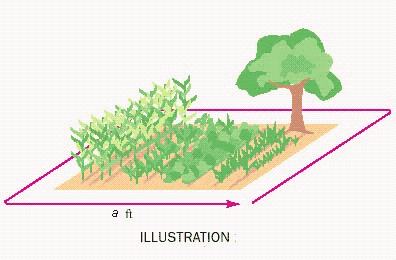Find two paths of approach from which one can conclude that the function has no limit as (x, y) approaches (0, 0).f(x, y) = 
What will be an ideal response?
Answers will vary. One possibility is Path 1: x = t, y = t ; Path 2: x = t, y = t2
You might also like to view...
Solve the problem.The resistance R produced by wiring resistors of R1, R2, and R3 ohms in parallel can be calculated from the formula  If R1, R2, and R3 are measured to be 7 ohms, 10 ohms, and 6 ohms respectively, and if these measurements are accurate to within 0.05 ohms, estimate the maximum possible error in computing R.
If R1, R2, and R3 are measured to be 7 ohms, 10 ohms, and 6 ohms respectively, and if these measurements are accurate to within 0.05 ohms, estimate the maximum possible error in computing R.
A. 0.017 B. 0.010 C. 0.014 D. 0.021
Evaluate the integral.
A. -  +
+  (2
(2 - 1)
- 1)
B. -  i +
i +  (2
(2 - 1) j
- 1) j
C. -  i +
i +  (2
(2 - 1) j
- 1) j
D. 7 j
j
The rectangular garden in the illustration has a width of x and a perimeter of 220 feet. Find x such that the area of the rectangle is maximum.
?

Fill in the blank(s) with the appropriate word(s).
Solve the logarithmic equation. Be sure to reject any value that is not in the domain of the original logarithmic expressions. Give the exact answer.log (3 + x) - log (x - 2) = log 2
A. 
B. {7}
C. {-7}
D. ?